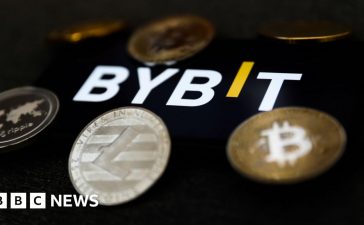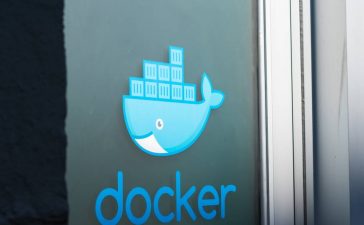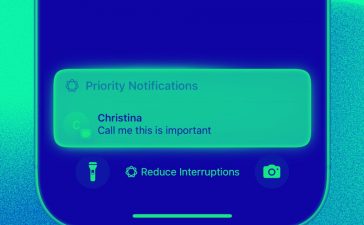Feature The Uber driver who picked me up the other day doesn’t think the ride-sharing app has much of a future in San Francisco.
Tim – a pseudonym as he asked not to be identified – expects Waymo, the leading maker of self-driving taxis, to broadly under-cut Uber’s human-operated ride-hailing service in the US city at some point in 2025, and feels that will be the beginning of the end.
He’s not alone in that belief.
“To put it bluntly, we are cooked,” said one person posting to a forum for San Francisco Uber drivers, in response to my solicitation for thoughts about Waymo. “We’re done for. In the age of artificial intelligence and automation, we’re the first to be impacted in a major way.”
Perhaps not the first if you count the transcriptionists, marketing copy writers, customer support agents, translators, illustrators, musicians, and writers facing the chop lately, nor the auto workers made redundant by assembly line machinery. But those driving for Uber and Lyft can expect to be among the first to lose their jobs to free-roaming robots.
The second Waymo trips are less than Uber, everyone including myself will just start taking Waymo
Ride-hailing drivers had come up earlier in the day when I was out walking my dog. A man who walked by on Sanchez Street was speaking loudly into his phone about the difficulty of balancing supply and demand in the ride-share business – having enough drivers active to respond to passenger ride requests.
That supply, according to Tim, has been declining. He estimated that in 2023, around noon at midweek, there were roughly 2,000 Uber drivers active in San Francisco. This year, he said, there appear to be fewer, about 1,800. By 2025, he said, he expects that number to be more like 700.
Those numbers, he acknowledges, are estimates based on what he sees as a driver. They’re probably not accurate. Uber didn’t respond to a request to provide that information.
What has been going down with more certainty is the amount Uber pays its drivers – because Uber is keeping a larger portion of fares. And that’s as much of a threat to drivers as Waymo‘s driverless computer-controlled cars.
Tim argues that Waymo, which began offering rides to the general public in San Francisco in June, will use the same business playbook that Uber used to beat its competitors – spend venture capital to price rivals out of the market.
“The reason that Uber won the market for ride sharing is because they raised more capital than any of the other companies,” he explained. “So what they did with the capital was subsidized rides.”
“The second Waymo trips are less than Uber, which is going to happen in 2025, everyone including myself, will just start taking Waymo,” he said.
Lyft, Uber, and Waymo, he argues, are undifferentiated products, except that Waymo has the best cars, generally speaking. If you hail a Waymo in San Francisco, it’s invariably going to be an all-electric Jaguar fitted with Google’s autonomous technology.
“If you’re riding around in an Uber X, you’re in an old Prius, or maybe a Tesla,” he said. “And if you’re in a Waymo you’re in a $78,000 [or more] Jaguar. It’s super nice leather, cushy seats, great suspension, big tires. Uber is not going to be able to do anything once Waymo starts under-pricing them.”
Waymo cars, in the limited area that they operate, are driving about on their own and competing with human drivers for fares in San Francisco, not to mention Los Angeles, Phoenix, and Austin. The robocars’ rates appear to be higher generally than Uber and Lyft, though in our experience Waymo can sometimes be about the same.
And there are other downsides: Waymo rides often require a longer wait and can take longer to complete, according to The San Francisco Chronicle. But there’s no tipping and no risk of driver assault – the subject of a great many lawsuits against Uber. And so far Waymo cars have a good safety record.
Just this week, Waymo argued it is improving road safety as, according to its figures, its autonomous cars have, on a like-for-like basis, fewer crashes than humans after 22 million rider-only miles on the road. The biz was not available for immediate comment on pricing fears by Uber drivers.
If Waymo does eliminate human-driven rides in San Francisco, the in-car conversations will suffer. And that would be a shame because I’ve met some interesting people driving for Uber and Lyft.
Take Tim, for example. He says he ran an on-demand rental business that he shut down during the pandemic and plans to re-open in November. “My main skill in the business, other than like strategy, is finance,” he said. “So I do finance and accounting for small businesses as a consultant.”
“The Uber story has been really interesting to me,” he said, “like watching Uber and Lyft play out not just because I’m an Uber driver. I drive Uber because it allows me to be the delivery guy for my own company.”
Driving for Uber, though, is not a great gig, he said, because he makes less than minimum wage – and that, other Uber drivers argue, is more of a story than what Waymo will do to the ride sharing industry.
“A more interesting article might be on Uber and Lyft completely destroying the livelihoods of thousands of rideshare drivers in California with their appalling greed,” as one forum participant put it.
But it’s the same story, really, of moving fast and breaking things – which in this case means people’s jobs. Uber spent years burning venture capital by subsidizing the price of rides and then in 2022 started taking a larger share of fares. It’s now vulnerable to that same strategy because it’s a public company that wants to show a profit. Waymo, meanwhile, operates at a loss, with the promise of another $5 billion in funding from Alphabet.
Len Sherman, a Columbia business school professor, last month explained in an online essay that Uber in the past guaranteed drivers a minimum fare, following the business model used by taxis.
“But two years ago, Uber switched to a new pay model — Upfront Fares + Destination (UFD), giving Uber complete discretionary control over how its opaque algorithms determine driver pay,” he said.
“At about the same time, Uber also introduced ‘Trip Radar,’ an online auction scheme, in which multiple drivers vie in a race to the bottom to accept low pay offers. Uber’s former practice of guaranteeing minimum driver pay for every trip was thus replaced by a policy where Uber now only has to pay the minimum any driver will accept for each trip.”
The result, he said, pointing to data from gig worker analytics biz Gridwise, has been a 17 percent year-on-year decline in 2023 for Uber driver’s average monthly earnings.
Uber is a lottery now, the requests go out to hundreds of drivers
As one of those responding to my Uber forum query described the situation, “Uber is a lottery now, the requests go out to hundreds of drivers, if you’re lucky and you hit that accept button fast enough, ya might get the $4.32 ride. Which takes 17 minutes.”
Sherman told The Register, “Ever since this new upfront driver pay policy came into effect in late 2022, and certainly for the full year 2023 and beyond, drivers across the country in every city I’ve talked to have experienced significant, material double-digit earnings cuts all to what they had enjoyed – to the extent they ever enjoyed it.”
Precarious circumstances
The question then, said Sherman, is how Uber can claim that it has a robust supply of drivers when wages are declining. “The only thing I can come up with is that speaks to just how precarious the financial circumstances are for a large and maybe even growing population of citizens of the US,” he said, adding that also in many major cities, drivers may be recent immigrants with no better employment options.
Sherman said the Uber driver who expressed concern about the viability of driving in San Francisco is right to be worried. But he added that the timeline for automated cars operating more broadly remains difficult to predict. It could be five to ten years before we see a meaningful impact from autonomous vehicles, he said.
Yet that impact, when it comes, may not make much of a dent in Uber’s viability if the app maker can find a way to change horses midstream. The company last year partnered with Waymo and is clearly looking for ways to adapt to a business without drivers. That could be expensive if Uber has to pay for its own fleet of autonomous vehicles.
In July, a research note from Melius Research analyst Conor Cunningham said that Uber and Lyft see autonomous vehicles (AVs) as inevitable and something that will enhance their services over time.
“It’s not hard to envision – the current state of mobility centers around human drivers with basically no AVs in the market,” the research note says. “When AVs start to scale and integrate, it will be a slow ramp where a hybrid network will be needed at first as drivers complete more complex tasks like driving in bad weather, and then the eventual tipping point in AV technology drives broader adoption.”
In San Francisco, the tipping point may be closer than it appears. ®












